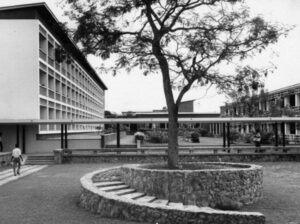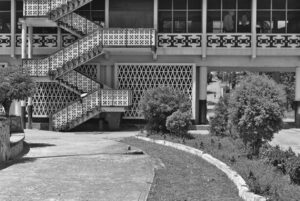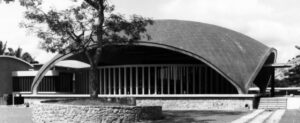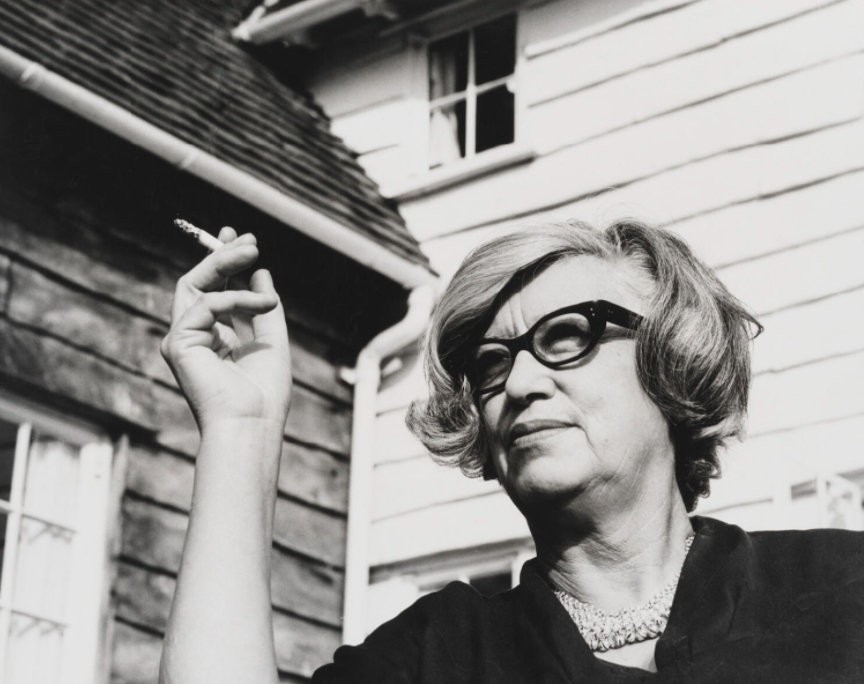As part of our ongoing “Women in Architecture” series, we’re spotlighting another luminary in the field: Jane Drew. As the spearhead of the Modernist Movement in London, Jane Drew prevailed as a determined leader in a male-dominated profession, as she changed the lives of many by directing her career to explore the intersections of architecture and wellness.
The Life of Jane Drew
Drew was born on March 24, 1911, in Thornton Heath, Croydon, in South London. Her father was a surgical instrument designer and founder of the Institute of British Surgical Technicians, and her mother was a school teacher who greatly encouraged Drew’s interest and appreciation for art and nature.
After graduating high school, Drew began her study at one of the most prestigious and competitive architectural schools in the world, the Architectural Association School of Architecture in London. Following five years of study, during which she married fellow architect James Thomas Alliston, Drew propelled herself into the architecture world working for Joseph Hill. During her employment, Drew was introduced to Bohemianism, which fostered her musical, artistic, literary and spiritual pursuits and had a lasting impact on her career.
Following her divorce in 1939, Drew became heavily involved in the International Congresses of Modern Architecture (CIAM), introducing her to Swiss architect Le Corbusier. Eventually, under the guidance of the CIAM, Drew became a principal founder of the Modern Movement in Britain alongside Henry Moore, Elizabeth Lutyens, and her future husband, Maxwell Fry.

Inspired by the abundance of talent surrounding her, Drew’s illustrious architectural career blossomed in the 1940s. She opened her firm at the beginning of the decade and only employed female architects, giving them a unique platform for professional and creative pursuit. Due to constraints posed by World War II, much of Drew’s work was limited to London. However, in 1944 she was appointed as the assistant town-planning advisor to the resident minister for the British West African colonies, which would change the trajectory of her career forever.
Career and Accolades
Alongside the great heartbreak, World War II brought to London came new opportunities, especially for Drew and her husband, who had established a new firm in London: Fry, Drew and Partners. In 1947 she began designing a series of new schools in Ghana and Nigeria. With cultural appreciation in mind, Drew and Fry worked around the unique topography to incorporate native motifs and create a new architecture style for the new nation, now known as Tropical Modernism.
In 1951, Indian Prime minister Pandit Nehru approached the couple in hopes they would develop the new capital of the Indian state Punjab, Chandigarh. The couple eagerly accepted his offer and began working with Le Corbusier to create their most celebrated architectural work. The couple experimented with new forms of design in the country and discovered methods to integrate schools, health facilities, and swimming baths into housing structures, affecting the future of housing designs throughout India.

Drew’s triumphant accomplishments didn’t stop there; she garnered even greater acclaim during the latter half of her career. Some of her most renowned works included designing the interior of London’s Institute of Contemporary Arts building (an organization that she helped establish), the School for the Deaf in Herne Hill, London, and buildings for the Open University in Milton Keynes, England.
Drew continued her involvement in architecture after her retirement in 1973 and served on the Council of the Royal Institute of British Architects, of which she was a lifelong fellow. And, shortly before her death in 1996, she was awarded Dame Commander of the Order of the British Empire.
Throughout her distinguished career, Drew’s passion for conscious design prevailed through her modern work. With every new project, Drew took away an abundance of new knowledge, forever shaping her future work and fashioning the process of thoughtful decision-making that remains in architecture today.


